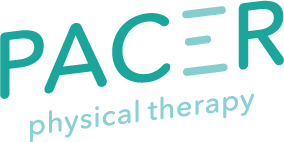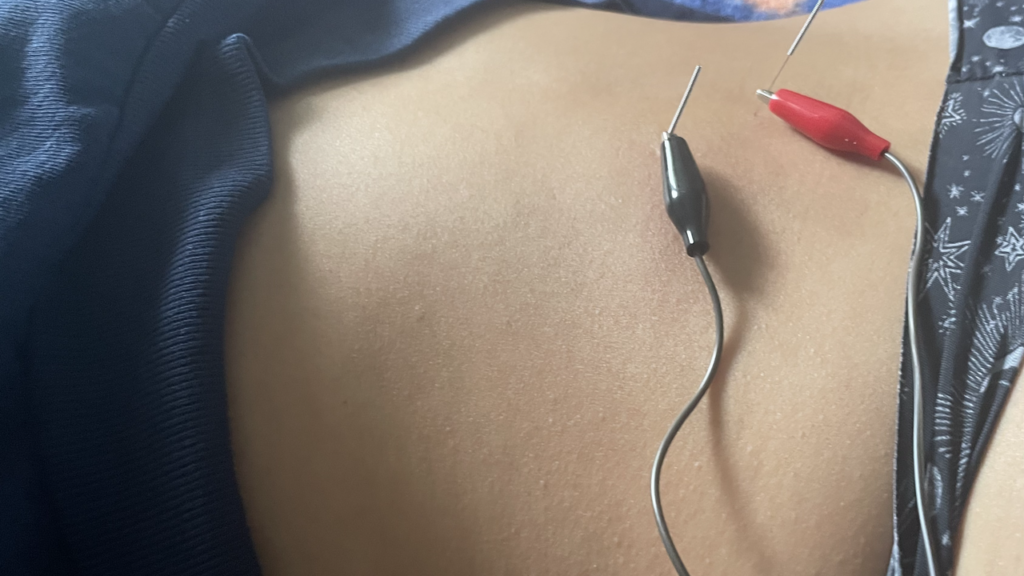Last Updated: 5/20/24
Dry needling can be an effective intervention as a part of physical therapy treatment. As a dry needling provider myself, through Herman and Wallace, I have found that using dry needling for pelvic-related conditions can be super effective in eliminating symptoms and improving the quality of life for my clients.
I wrote this article from multiple research-based resources to explain dry needling and how it can be a great rehabilitation treatment for you.
What Is Dry Needling (DN)?
“Dry needling (DN) is a skilled intervention that uses a thin filiform needle to penetrate the skin and stimulate underlying myofascial trigger points, and muscular and connective tissues for the management of neuromusculoskeletal pain and movement impairments,” according to the American Physical Therapy Association.
The end goal is to affect change in the body, whether that be pain relief, improved mobility, or improved function.
DN uses a thin solid filament needle to stimulate neuromuscular tissue to elicit a response and to improve dysfunction in the target tissue. The target tissue can be irritated or irritating a nerve, causing the region to become tight, stiff, or weak.
With DN, we can effectively alter the tissue response more holistically. It’s an effective alternative to opioids in treating chronic pain including chronic pelvic pain.
Benefits and Mechanisms of Dry Needling
Dry needling has neuromuscular benefits (impacting how muscles function and impacting functional mobility and performance). This intervention releases tight, restrictive, or irritable tissue, increases blood flow to a muscle, decreases pain, and improves muscle strength, endurance, and flexibility.
Dry needling also has neurovascular benefits, improving blood flow to the region of intervention, and neuroendocrine benefits, improving the transmission of neurotransmitters, neuropeptides, and hormones.
DN can also influence our peripheral nervous system and our central nervous system, giving our body a “reset,” especially in areas of our body where there are changes in tissue quality, mobility, and tissue function.
A study using DN as an intervention for female chronic pelvic pain indicated a significant decrease in pain with specific dry needling to the pelvic floor musculature, glutes, and specific hip muscles. In 5-7 treatments these women were able to have improved pain levels, less movement sensitivity, and a decrease in painful intercourse.
Other regions of the body that may be helpful to perform the intervention to include:
- Abdominals: Needling can be very effective in reducing urinary urgency, urinary or bowel incontinence, and in treating chronic pelvic pain.
- It is also a great intervention for those post-cesarean sections to treat scars to improve the appearance and mobility of the tissue and decrease adhesions, reducing pelvic pain and incontinence later in life.
- Glutes: Can be effective in treating sciatica, SI joint pain, or in those with pelvic floor pain, heaviness, or pressure.
- Adductors (inner thighs): May be effective in improving incontinence or urgency or frequency in urination.
- Pelvic floor: Can be effective in improving pelvic pain, pain with intercourse, and incontinence.
- Lower back: To improve sacral and lumbar region mobility and pain, improve symptoms of constipation, SI joint pain, or tailbone pain.
Among many others.
What to Expect in a Dry Needling Session
The target tissue must be fully exposed during the dry needling treatment session, and this intervention cannot be performed through clothing. The therapist will wear gloves for the entire treatment and will sanitize their hands as well as the area of the body they plan to treat to prevent infection.
The therapist will then apply the technique to the target tissue and leave the needle in place for a certain amount of time. This may be used with or without electrical stimulation. It also may be performed with the movement of the needle during the procedure.
In a session, a local twitch response is common. This response is a contraction of hyperirritable muscle fibers in response to mechanical input with the result being pain relief and a neuromuscular reset. This can improve muscular function during movement with fewer restrictions or issues and improve movement patterns.
It can feel like a deep muscle ache, deep pressure, or muscle grab, but once it resolves you will feel NOTHING.
Using Electrical Stimulation in Combination with Dry Needling
There is more evidence suggesting the use of electrical stimulation with dry needling. Electrical stimulation is a small hand-held device to provide stimulation to the muscle and gives the area of muscles and surrounding nerve structures a “reset.” It is arguably more effective than just dry needling alone.
In a study using DN to treat female stress incontinence, Wang et. al. found that performing dry needling with electric stimulation after four-week treatment improved symptoms greater than 50% from the patient’s baseline and up to 85.7% after 15 sessions and with a high percentage of complete resolution of symptoms with lasting effects at the 4-year check-in.
This indicates that DN with electrical stimulation can be an effective way of treating incontinence.
How Will My Body Respond After a Dry Needling Session?
After receiving dry needling as a part of your physical therapy session, you may experience soreness or loosening of muscular tension in the area where the intervention occurred, as well as decrease in symptoms.
Minor bruising, bleeding, slight pain (during/after),or skin reaction may occur, although the incidence is low, and those symptoms should resolve within 48 hours in and around the target tissue. You may also have temporary symptom aggravation, as your body is starting to reset and improve function in the areas that were just needled.
Lastly, fatigue is common, as DN can send your body into an autonomic nervous system response allowing your body to relax and making you tired.
Drinking water and staying hydrated within the 24-48 hour time frame after the intervention should help with recovery. No other lifestyle changes are particularly recommended post-needling, but be sure to contact your provider as they may have specific recommendations, based on your case.
Wrapping Up: Dry Needling for Pelvic Conditions
Each person’s experience is different, and the intent of treatment will vary based on how much pain you are in, how tight your muscles are, your familiarity and tolerance to needles, which body part is being needled, and overall pain tolerance. So consult your physical therapist to see if dry needling may be a valuable treatment option for you.
Or, if you have any questions or want to learn more, feel free to reach out and book a complimentary discovery call HERE with me. I would be happy to answer any questions for you and point you in the correct direction to aid in resolving the symptoms you are experiencing.
– Juliana






